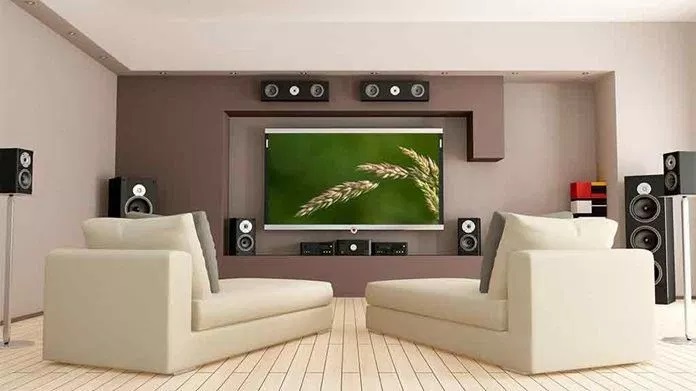
Do you ever feel disappointed by your TV’s speakers? There is a quantum leap between the quality of TV speakers and a home theater system. Once you have heard the real surround sound, you won’t want to go back to your TV speakers. With the speakers and other audio components carefully arranged in your room, you can enjoy the fully immersive sound experience.
In this article, we have explained how to set up the best home entertainment system piece by piece from the receiver to speakers to subwoofers all controlled by rugged tablets.
Basic Components you need for the Setup
Home Theater Receiver
This is the heart of your home theater system. It connects all of your speakers, processes audio from your TV or music player, and amplifies it for playback. When purchasing a receiver for your home theater, go for the one that has enough channels for speaker and subwoofer configuration, enough power to amplify the loudspeakers, and other additional features that you want to use as a USB port or Bluetooth.
Speakers and Subwoofers
Depending on your setup and room space, you have to decide the number of speakers and subwoofers you have to purchase. Usually, 5.1 is more common where you need at least 5 speakers and a subwoofer. These include left and right speakers, a center channel, two or more surround speakers, and a subwoofer. While 7.1 needs two rear surround speakers.
If you are on a budget, then go for the best subwoofer under $500 with a high-end sound system, specifications, and quality. These subwoofers are more common these days in the market as they deliver the same sound as the larger ones.
Home Theater Amplifier
Mostly, home theater systems depend on their receiver for enough power, but an amplifier is useful for delivering that extra wattage to your speakers. If you want a subtle and simple system, you can always skip this purchase.
Cable/Wire
A high-quality wire is essential to effectively deliver the power and sound to your speakers. They help deliver quality sound in the entire room. It is recommended to use high-purity- 14 or 16 gauge wire with CL3 rates.
Surge Protector
After spending hundreds of dollars on building a home theater system, purchasing a surge protector should be a no-brainer. It guards your electronics against voltage spikes, which can happen anytime without warning on your power grid and can fry your gear.
Everything at Right Place
Once you’ve got your gear, it’s time to set up everything in place, assemble your home theater! If you want to get the best sound, take some time to place the speakers and subwoofer in the right place, which could also mean rearranging some furniture. When you’ve figured out everything, it’s time to test your system. Play some music!
Play the music that you are familiar with, which means you know each and every beat of it and carefully listen to the high and low pace tones. Adjust things accordingly.
Building a home theater system from scratch isn’t just a piece of cake. It really requires analysis, research, home setup (according to the system), and a lot more things. But from the above guidelines, you will surely find it a bit relaxing though.



